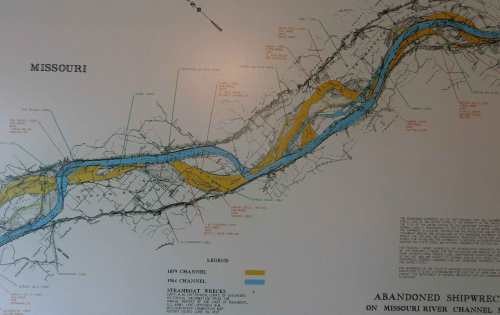Next place we visited was the Washington Historical Society Museum. I like small-town museums, but this exceeded expectations—partly because it was such a beautifully and lovingly organized collection and partly because Washington had a history that surpassed my expectation. The region became part of the U.S. with the Louisiana Purchase and, once settlers began to come, trade on the Missouri River made it prosperous.
The museum highlighted the role the river played in local and national history, local businesses over two centuries, decorative arts, plants and animals, involvement in the Civil War and two World Wars, and more.

The area was largely settled by Germans, so German influence was much in evidence. Two elements of German culture in particular, revealed by impressive displays, fascinated me. The first was the display on the Turn Verein in Washington. I looked these words up, and Turn is from the German Turnen, which means “practice gymnastics” and Verein means “club or union.” So gymnastics club. Old films ran of precision teams doing synchronized exercises. Photos and displays showed equipment and members, and info cards explained a bit of the history. Founded in 1859, the Washington Turn Verein took a break during the Civil War, but then started up again. This was not a local movement, but rather an international phenomenon. From 1878 to 1897, Washington, MO, was the Turn Verein Headquarters for the United States.

Indian Clubs used in gymnastic routines, with photos of gymnasts behind the case.
Then, upstairs, we browsed through antiques, photographic equipment, Native American artifacts, and other local historic items. The largest exhibit, however, was of Franz Schwarzer and his zithers. There was a monitor with a video available—a video which, in fact, had been written and produced by Ralph, my guide for this visit. It revealed a remarkable climb by Schwarzer from local artisan to the best zither maker in the world, with a gold medal from the international competition in Austria. During his very productive career, Schwarzer made approximately 11,000 zithers!

One of the zithers made by Franz Schwarzer.
Astonishing to realize that this relatively small town (about 14,000 residents) was at one time the focus of national and international attention. The world is always so much more interesting than one expects.
And if you’re interested in more info on Washington, the Historical Society website is very good.




















